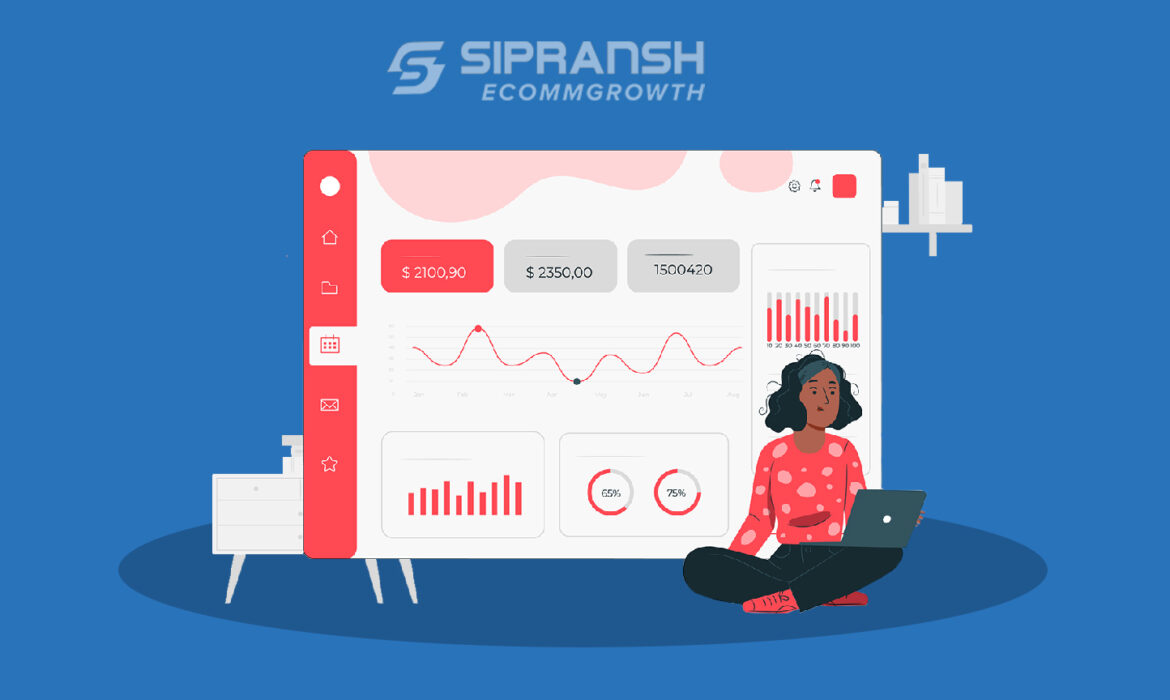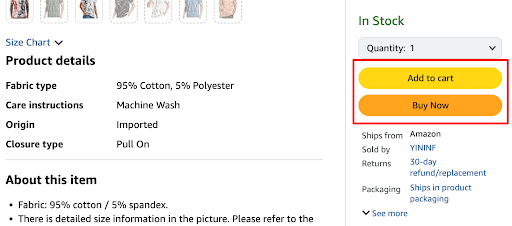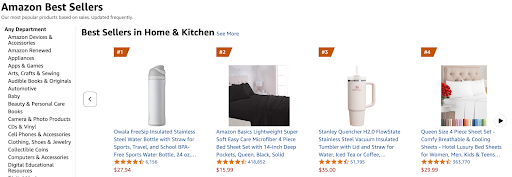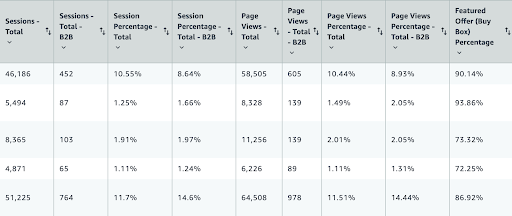
Listing products and waiting for sales isn’t the only thing that goes into selling on Amazon. You must monitor your performance metrics if you want to succeed. These figures let you know what is and is not functioning and where you need to make improvements. Amazon provides you with a wealth of tools to monitor the performance of your business, from boosting conversions to winning the Buy Box, but let’s face it, it can be daunting.
We’ll provide a straightforward explanation of the most significant Amazon performance metrics in this blog. These insights can help you make better judgments and increase your sales, regardless of whether you’re a novice seller or trying to improve your approach.
1) Buy Box percentage
The Buy Box percentage measures how often your product is the default option customers see when clicking “Add to Cart” or “Buy Now.” Winning the Buy Box is directly tied to your sales potential. Without it, your product may still be visible on Amazon, but customers will need to take extra steps to purchase it, reducing your conversion rate significantly.

A high Buy Box percentage is essential for consistent sales. Ideally, you should aim for 90% or higher to maximize visibility and conversions.
How to achieve a high Buy Box percentage?
- Keep prices competitive using automated repricing tools.
- Choose FBA for reliable shipping and customer service. If using FBM, ensure fast shipping and excellent service.
- Maintain Order Defect Rate below 1%, Tracking Rate above 95%, and Late Shipment Rate below 4%.
- Respond to customer inquiries within 24 hours.
- Keep inventory well-stocked to avoid running out.
- Aim for a seller feedback rating of 95% or higher.
- Consult an Amazon SEO expert to optimize visibility and performance.
2) Best Sellers Rank – BSR
The sales rank, often referred to as the Best Sellers Rank (BSR), shows how well a product sells in relation to others in its category. Sales are higher when the BSR is lower. A product ranked #1 in its category, for instance, is the best-selling item; a product ranked #10,000, on the other hand, is far less well-liked. Customers will find it easier to locate products with a high BSR because they are more likely to show up higher in search results and on category pages.

What makes a BSR good?
Top 1–10: Products that are highly competitive and often bought.
Below 1,000: High sales volume and outstanding visibility.
1,000–10,000: Competitive but less crowded; frequently perfect for specialized goods.
Over 10,000: Reduced demand; perhaps a better sales approach or increased awareness are needed.
How can you raise your BSR?
- Make use of high-volume and relevant keywords in descriptions, bullet points, and titles.
- Include top-notch Amazon infographic images that highlight every aspect of the product.
- Write a persuasive copy that highlights the qualities and advantages of the product.
- To draw in customers, provide competitive pricing.
- Promote favorable evaluations and promptly address client concerns.
- For dependable and quick shipping, use FBA; alternatively, use FBM to uphold high standards.
- To increase sales, run promotions, discounts, and coupons.
3) Unit session percentage (conversion rate)
Conversion rate, sometimes referred to as unit session percentage, calculates the proportion of visitors who buy your product after seeing its listing. It’s a crucial sign of how well traffic to your listing turns into sales. On Amazon, a respectable conversion rate is usually between 10% and 15%. A lower percentage could be a sign of problems with listing quality, product appeal, or pricing.

How to get better:
- Make use of excellent photos that clearly display your product from a variety of perspectives.
- Write product descriptions that are benefit-focused, to the point, and easy to understand.
- For increased search visibility, make sure your title and keywords are optimized.
- To draw in customers, provide competitive pricing.
- Assure dependable and quick shipment choices (effective FBM or FBA).
- Promote good ratings and promptly respond to unfavorable comments.
- Utilize Amazon PPC advertising to drive relevant traffic to your listing.
- Regularly analyze and refine your listing elements based on performance data.
4) Return on ad spend
The amount of money you make for each dollar you spend on Amazon ads is known as return on ad spend, or RoAS. Formula to calculate RoAS is – Total Revenue ÷ Total Ad Spend. On Amazon, a strong return on assets (ROAS) is usually 3:1 or above, which means you make $3 for every $1 invested. A lower RoAS suggests that you should make changes to your marketing campaigns because they might not be profitable.

How to improve
- Make sure your campaigns focus on high-converting keywords.
- Negative keywords can help you steer clear of pointless clicks.
- Improve the titles, photos, and descriptions of your product listings to increase conversions.
- Keep an eye on ad performance and weed out campaigns or keywords that aren’t working well.
- To improve visibility, use sponsored products and sponsored brands.
- To determine what works best, experiment with various ad formats and bidding techniques..
- Set a clear budget and adjust bids based on campaign performance.
5) Account health rating
The Account Health Rating (AHR) evaluates how effectively your Amazon account follows Amazon’s regulations and customer service standards. A good AHR is essential for preserving your account’s visibility, eligibility for the Buy Box, and overall credibility. An AHR score of 200 to 1,000 is deemed healthy, whereas a lower number may result in warnings or account suspension.

How to maintain or improve AHR:
- Keep the Order Defect Rate (ODR) below 1%. Address negative feedback and resolve customer issues quickly.
- Ensure a Valid Tracking Rate above 95% and a Late Shipment Rate below 4%. Use FBA or maintain high FBM standards.
- Regularly review and follow Amazon’s policies for listings, images, and product claims. Avoid violations like misleading descriptions.
- Regularly check the Account Health dashboard in Seller Central to identify and resolve issues promptly.
- Respond to customer messages within 24 hours and address performance notifications quickly.
6) Inventory Performance Index (IPI)
The Inventory Performance Index (IPI) measures how effectively you manage your inventory within Amazon’s fulfillment network. A good IPI score is often 400 or higher, allowing you to avoid storage restrictions and fines. A low score implies problems such as overstocking, stockouts, or stranded inventory, which can hurt your sales and profitability.
How to Improve:
- To prevent any extra storage expenses, regularly evaluate inventory levels and remove slow-moving products.
- Restock inventory for high-demand items to avoid stockouts and missed revenues.
- Resolve listing flaws or inaccuracies.
- Adjust pricing or run promotions to move items more quickly.
Staying on top of these numbers helps you make informed decisions, improve customer satisfaction, and increase profitability. If you’re feeling overwhelmed or unsure where to start, consulting Amazon experts can make all the difference. With their guidance, you can fine-tune your strategy, address weak spots, and take your Amazon business to the next level.






